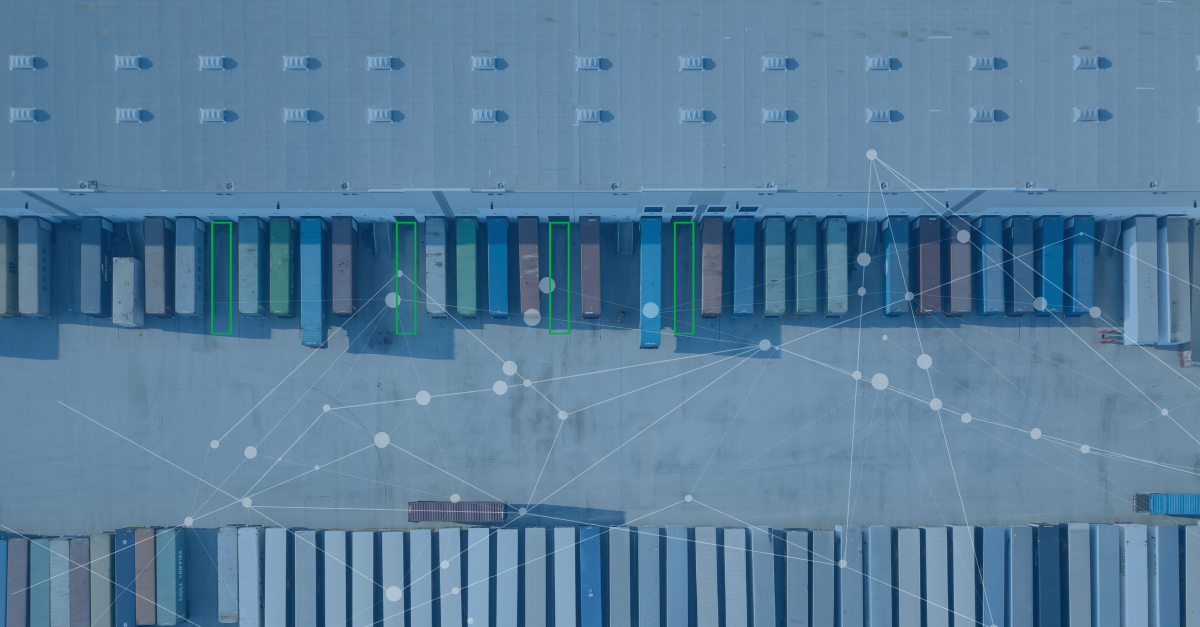Yard operations are a critically important but often overlooked function that keeps our economy moving each day. It involves the complex logistics of tracking the movement and inventory of trucks, trailers, and chassis in and out of the yard of a warehouse or factory facility.
In a nutshell, yard operations are an intricate dance of inbound and outbound logistics. Incoming vehicles are checked in at the gate and directed either to a receiving bay door or a space to drop a trailer or container. A lot is going on beneath the surface to make that happen on schedule.
Technology has made this process more efficient and accurate, especially the introduction of yard management system (YMS) software in the 1990s. Now artificial intelligence (AI) is revolutionizing yard operations, enabling much greater precision through real-time information capture and sharing.
The Evolution of Yard Operations
For years, yard operations were managed on paper, with information on logistics assets and transportation schedules kept on clipboards, Excel sheets, and other antiquated tools. As you can imagine, this is a system ripe for costly human error. Delays in gate clearance or mismatched dock assignments can quickly gum up the works, rippling through the supply chain and slowing down production. And asset visibility, like sailing on a foggy day, was extremely limited.
The YMS certainly brought vast improvements. It tracks yard assets and inbound/outbound shipments, schedules bay trips, and handles gate access control. However, unlike inside the four walls of the warehouse, YMS adoption has not kept pace, with only about 7% of companies using the technology as of 2022. Even where YMS is in use, most systems lack the ability to provide a real-time view of yard assets and vehicle movements.
Understanding AI and Its Capabilities
AI and closely related technologies (machine learning and the Internet of Things), are changing the game across industries by applying real-time data analytics. They’re used to predict trends, optimize operations, and prescriptively offer process changes and work-arounds. This is enabling organizations to transform decision-making, enhance efficiency, and create personalized customer experiences.
With IoT, every physical asset – not just computers and smartphones – is potentially a connected device. Using tiny sensors, they give off a constant stream of data that is fed into networks for tracking, processing, analytics, record-keeping, and reporting.
Machine learning (ML) is the process by which systems get “smarter” over time. It leverages mathematical algorithms that analyze and learn from data – whether sourced from IoT or traditional network exchanges, or both.
AI takes things to the next level, where machines are taught via large language models (LLM) to mimic human intelligence. It works in complementary fashion with both ML and IoT, enhancing AI’s ability to adapt and improve. Thus, refinements in software processes and functional efficiency become automated in a continuous, closed-loop fashion, enabling not only predictive but prescriptive capabilities.
AI in Action: Applications in Yard Operations
This can all be applied to yard operations in three key areas, improving overall performance, efficiency, and accuracy. Let’s explore them a bit.
Automated Vehicle Tracking and Management
AI, tapping into ML algorithms, can be used to optimize vehicle routing and scheduling. By tapping into real-time data feeds from yard security cameras, it identifies available docks and parking spots, helping incoming drivers quickly navigate to their designated locations.
Advanced optical character recognition (OCR) technology captures dozens of identifying vehicle and asset characteristics in a split second. Through analytics, an optimal destination and route is determined and information is relayed to the driver. Faster gate security clearance improves flow, greatly reducing truck idling time and carbon emissions, in turn helping to meet sustainability goals and mandates.
Real-time Decision-making
AI and ML systems employed in yard operations can improve resource allocation by spotting and predicting potential yard congestion choke points and making corrective recommendations. Dock scheduling also gains efficiency as backups are reduced or even eliminated, as yard managers can now make more intelligent decisions.
This decision-making capability has many ancillary benefits. For instance, inventory management is improved as more shipments arrive and are offloaded on a timely basis, feeding into production and order throughput. The logistics of outbound transportation are also optimized as traffic flow, scheduling, and routing are improved.
Safety Enhancements
AI is greatly enhancing yard safety protocols through predictive analysis, identifying potential hazards, and recommending preemptive actions. Enhanced monitoring capabilities support standards compliance, while automated surveillance allows for greater yard security. And optimized traffic flow and equipment usage reduces accident hazards and damage costs, while keeping workers and visitors safe.
Yard Operations, Long a Supply Chain ‘Black Hole,’ Are Getting A Big Tech Assist
As yard operations play such an important supply chain role, as intermediary between manufacturers/sellers and their customers, they shouldn’t be managed with outdated tools or processes. A YMS is certainly an upgrade, but lacks the real-time analytical and prescriptive power of AI systems – which actually complement it.
EAIGLE is a pioneer in applying AI to logistics. Its innovative OCR technology captures data from security cameras to optimize vehicle flow and manage yard assets. Importantly, EAIGLE’s platform augments rather than replaces a legacy YMS.
EAIGLE’s systems for gate management (AVAC™ – Automated Vehicle Access Control) and yard operations (YardSight™) improve operations by enabling optimized gate access and making dock scheduling and queueing more efficient. To find out more, request a demo today.


